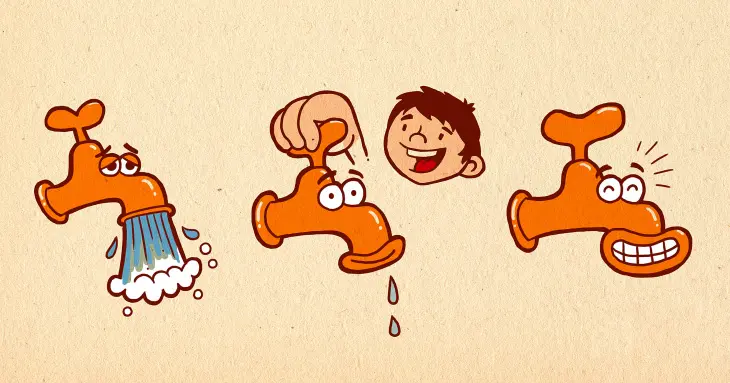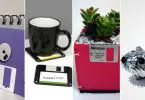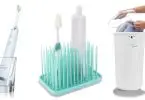You’ve watched documentaries about how global warming is negatively affecting the Earth, and heard numerous reminders about the urgent need to conserve water. The question is, are you really doing your share in helping conserve this precious resource? Despite the fact that more than 70% of the Earth’s surface is covered by water, a meagre 2.5% is fresh water and the rest is salt water. This highlights the need for each and every household to do their share in saving water.
Even those who live in areas where there is ample rainfall would do well to conserve water to save energy as well. This is because energy is needed to process rainwater into potable water. In the US, the average family uses 120 gallons of water a day so if every household will consciously conserve the resource, the savings will add up to a lot.
The good news is that there are many small and big things that you can do inside the home to conserve water. If you encourage all family members – even the kids – to perform such water-conserving tasks on a daily basis, the savings will combine to a lot. Not only will you get to do your share in helping save the environment, but you can also save money since lowering your water consumption decreases your utility bills.
Take a look at the top 50 ways for you to conserve water at home:
In this guide... [hide]
In the Kitchen
- If you have a dishwasher, only run the machine when it’s fully loaded. This will save you both water and electricity.
- If you only need to wash a handful of dishes, do it manually. Fill two basins – one with soapy water and another with clean water for rinsing.
- Don’t stack anything against your HVAC so that the air compressor can work efficiently.
- Soak dirty pots and pans for several minutes before washing them to conserve water.
- When washing fruits and veggies, soak them in a basin of water instead of letting water flow freely from the tap.
- Thaw frozen foods in room temperature instead of defrosting them under running water.
- Don’t use large pans when cooking small volumes of food. Not only will this retain flavor and nutrients, but you will also save water and electricity during clean-up.
- Recycle the water used for rinsing food items by using them to water house plants.
- Use only one glass for your drinking water throughout the day. This will greatly reduce the number of dishes that you have to wash.
- If your dishwasher needs replacement, look for a model with a high Energy Star rating.
In the Laundry Room
- Only run the washing machine during full-load cycles. This will save you 1,000 gallons of water a month.
- If you only have a few items to wash, make sure that the water level on the washing machine matches the size of the laundry load.
- To conserve not just water but also electricity, skip the hot water washing cycle. Cold water cleanses clothes just as well, and the bonus is that the vividness of the fabric color is retained.
- Consider hiring a plumber to re-route the households grey water to plants and trees, instead of the traditional sewer line. This is permitted in some cities and counties, depending on the local building codes.
- If your washing machine needs replacement, look for one with a high Energy Star rating and water conserving feature.
In the Bathroom
- Take shorter showers daily to conserve water. Even cutting your shower time by one or two minutes will allow you to save 150 gallons per month. If you keep your shower time under five minutes, you can save up to 1,000 gallons of water per month.
- Install a low-flow or intelligent shower head.
- Use the old-fashioned trick of putting food coloring in the tank of your toilet. If the color outflows into the bowl even without flushing, there is a leak. Fixing this will save you gallons of water per month.
- Replace old-fashioned toilets with ones that have intelligent flushing systems. There are dual-flush models which use lesser water for liquid waste.
- When brushing your teeth or shaving, do not let tap water run. Use a basin or a glass of water instead.
- While washing your hands or your hair, turn the water source off while lathering.
- If you must take a bath in the tub, do not fill it up to save up to 70 gallons of water.
- Replace toilet flappers which do not completely seal after flushing. Leaking flappers result to up to $500 worth of wasted water per year, when you can buy a new one for under $10.
- Use towels more than once – hang them up dry after every use to save water while doing the laundry.
- While taking a shower, keep a bucket or basin under it to catch excess water – and use it to flush the toilet or water plants.
Outdoors
- Instead of using pressurized hose to wash your car, use a bucket of water instead.
- Clean patios, driveways, sidewalks and similar outdoor areas with a broom instead of water.
- If you have an evaporative cooler, make sure that it goes through seasonal maintenance checks for more efficient cooling.
- Regularly check for broken or leaking pipes, hydrants and sprinklers. Fix the problem immediately to conserve water.
- Know exactly where the master water shut-off valve is located. If a pipe bursts, turning this off could easily save you gallons of water per day – rather than waiting for the plumber to fix things for you.
General Indoor Water Saving Tips
- Make sure that no faucet inside your house has a leak. A faucet which leaks one drip of water per second will waste up to five gallons of water per day!
- If you accidentally drop ice cubes on the floor, place them on top of plants instead of throwing them in the sink.
- Never put water down the drain. Always look for another use for it, such as for watering plants in the garden or cleaning a spot of dirt on the garage.
- Instead of having a kitchen sink disposal, start a compost pile instead which you can use to dispose food waste. These systems need a lot of water to operate properly.
- Unless water is being recycled, avoid installing ornamental water features.
Additional Ways to Save Water at Home
- Teach your kids the value of saving water inside the house. Tell them how much water is being wasted when they allow water to run from the tap while brushing their teeth – and they should be more conscientious about doing it in the future.
- If you have a swimming pool, use a cover to keep the water clean and prevent water loss due to evaporation.
- To save on both water and electricity, insulate hot water pipes.
- If you drive your car to a local car wash, choose businesses that recycle water. Or, you can wash them yourself at home using recycled water.
- If you have a fish tank the old water that you will be replacing can be used to water non-edible plants.
- Use a rain barrel to harvest rainwater from gutters. You can use the water on plants in your gardens and the grass on landscaped areas.
- Don’t overwater your plants – most plants die due to overwatering instead of under-watering.
- If you have a garden, plant during the spring and the fall season. These are the times of the year when the plants need lesser water to grow.
- Regularly check hoses, connectors and spigots for leaks. If you are using a faulty hose, you will be wasting gallons of water when finishing a specific task.
- Consider retrofitting all household faucets with aerators that have restrictors for low water flow.
- Use a kitchen timer when watering your lawn using a sprinkler or a hose. Even going one minute over the recommended time will result to water wastage.
- During the summer, grass that turns brown is not dead – just dormant. For this, watering every three weeks should suffice and once the rain begins again, the grass will turn to its original green color.
- Bathe your pets outdoors, in areas where the grass needs watering.
- When replacing any household appliance that uses water and electricity, choose models which have high Energy Star ratings. A water conserving feature would also help you save gallons of water each month.
- Make sure that all family members are aware of what you are doing to conserve water inside the home. Get them in on the act as well, and you can even hold meetings with the neighborhood to encourage other families to do their share in the worldwide water conservation campaign.













